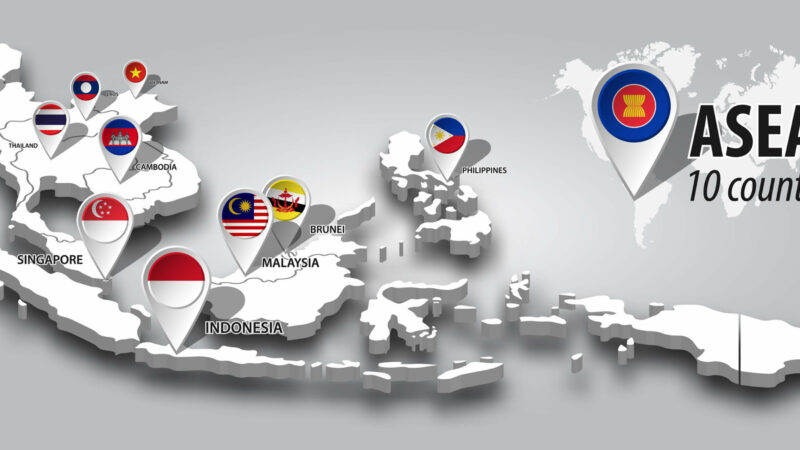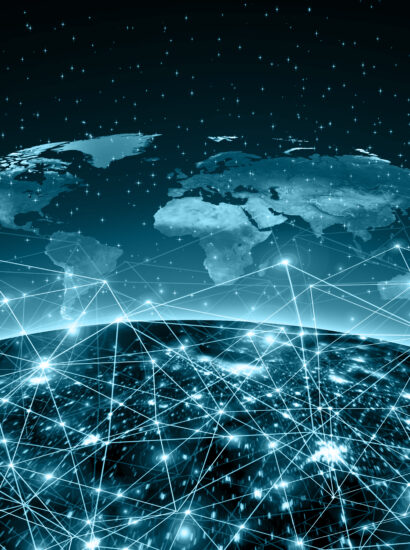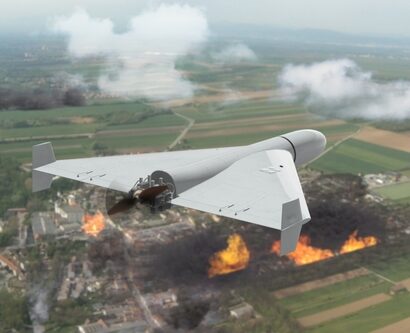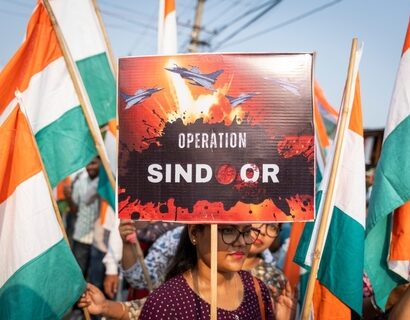Abstract: Since its conception, ASEAN has struggled to develop a concise understanding of its intelligence cooperation within its member states. ASEAN has also wrestled with developing a clear relationship between intelligence cooperation and counter-terrorism cooperation. It has subsequently led to two major arguments for its importance. Firstly, it allows member states to tackle joint security problems across a transnational dimension collectively. Second, it allows nations to maintain and preserve their political systems, which helps stop potential anti-governmental forces. In contrast, due to ASEAN’s internal structural conditions, cooperation is not prioritised within member states’ intelligence communities. Despite several major detractions, international cooperation remains vital to counter-terrorism within ASEAN. This is because ASEAN nations can collectively tackle their security issues while allowing member states to respect their own domestic sovereignty.
Problem statement: How to understand ASEAN’s renewed effort to collectively tackle interstate security issues?
Bottom-line-up-front: From its beginnings in 1967, ASEAN has sought to tackle various security-related problems within the South East Asian region. The group, whose origins go as far back as the Cold War, found its roots intelligence-wise against the spread of communism throughout Southeast Asia. This subsequently helped inspire its member states’ international intelligence cooperation. This entailed joint-security operations being conducted between member states and intelligence sharing.
So what?: Further work is to be conducted in addressing ASEAN Security Studies, explicitly examining the best means for ASEAN nations to tackle their collective security issues more adequately on behalf of academics and policymakers.
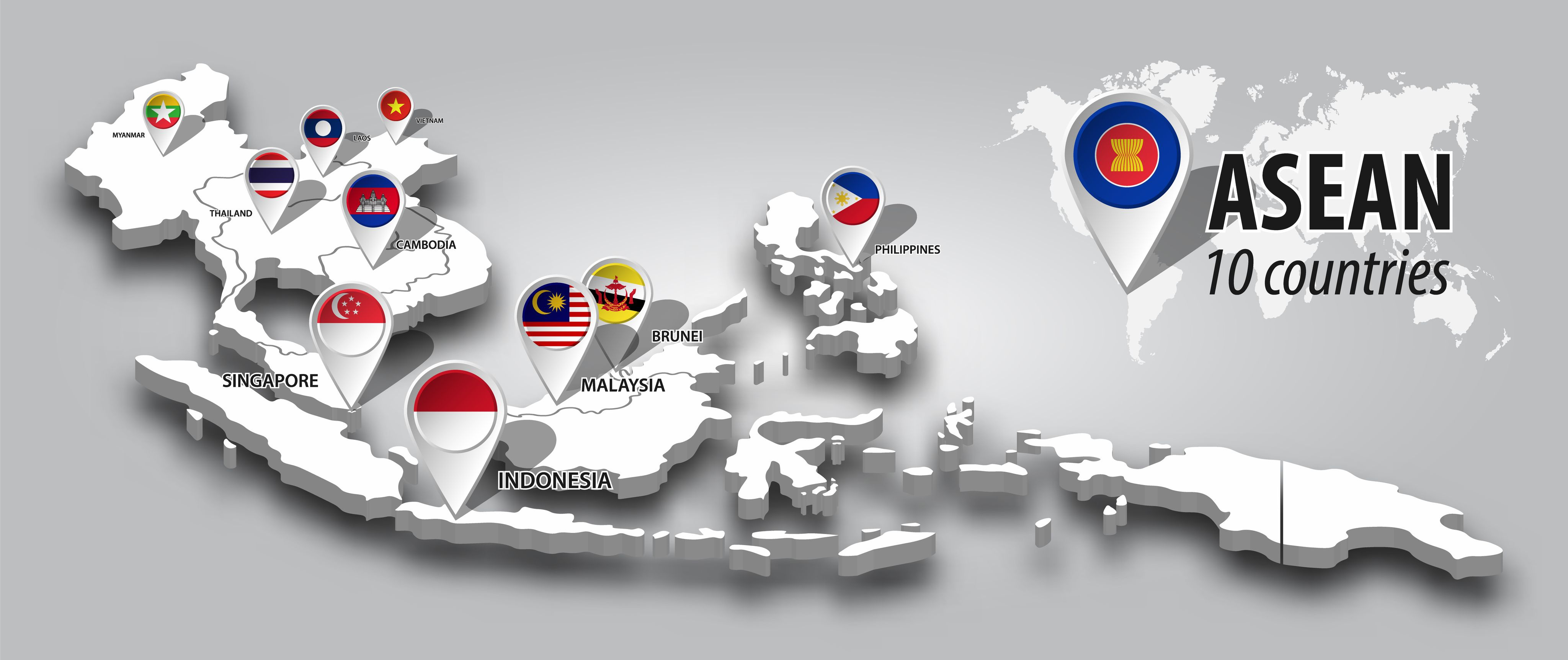
Source: shutterstock.com/Puwadol Jaturawutthichai
Traditional Anti-Communism?
The Association of Southeast Asian Nations (ASEAN) original member states are Indonesia, Malaysia, the Philippines, Singapore, and Thailand. Notably, ASEAN’s collective fear of communism shaped its initial International Intelligence Cooperation (IIC) and subsequent structures found within the organisation itself. In a turn of events, the end of the Cold War and former Soviet-aligned nations joining later helped the organisation steer away from a traditional Anti-Communist role to instead focus on performing an internal counter-terrorism (CT) role regarding IIC. These subsequent states include Brunei, Cambodia, Laos, Myanmar (Burma), and Vietnam, which joined later.
IIC is vital to CT within ASEAN. This is because it allows multiple nations to tackle security issues across a transnational dimension collectively.[1] Secondly, IIC helps ASEAN maintain its respective political-security systems, demonstrating a politicised element within its structures.[2]
The ASEAN Way
Two major issues have detracted from the importance of IIC to CT. First, ASEAN’s internal structural makeup is part of a broader cooperation problem within the organisation. This was put forward by Thompson and Chong,[3] and Bilahari, who assert that it hinders ASEAN’s ability for IIC operationalization to occur.[4] For Thompson and Chong, ASEAN itself is not designed to function when tackling interstate issues. As a result, ASEAN is permanently limited going forward in its ability to address terrorism and insurgency within its member states.
In contrast, this hindrance is an intentional structural limitation that has been put in place to strengthen the respective member’s domestic sovereignty from interference, which is part of ASEAN’s core political policy. Second, IIC is not essential because of the internal security intelligence dynamics. This extends from the subsequent point but directly focuses on the limitations within ASEAN member states and their respective intelligence agencies.[5] This means that intelligence agencies are less likely to place greater emphasis on joint CT work.
ASEAN itself is not designed to function when tackling interstate issues. As a result, ASEAN is permanently limited going forward in its ability to address terrorism and insurgency within its member states.
Nevertheless, intelligence remains unclear as a unified theory; intelligence cooperation remains ambiguous.[6] This paper will use Kent’s definition of intelligence as “the knowledge our highly placed civilians and military men must have to safeguard the national welfare”.[7] It fits ASEAN’s structural understanding regarding itself and the history of IIC within the region.
Consequently, it is important to examine the historical significance of ASEAN and its internal dynamics before understanding the importance of IIC to the organisation. Firstly, this is shown with the ‘Treaty of Amity and Cooperation in Southeast Asia’ (TAC). The TAC has presented the basis for interstate cooperation amongst ASEAN member states since its inception in 1976. First, it put virtue in the “Mutual respect for the independence, sovereignty, equality, territorial integrity and national identity of all nations”.[8] Second, “the right of every State to lead its national existence free from external interference, subversion and coercion”.[9] Third, the “Non-interference in the internal affairs of one another.[10] These policies are called the ASEAN Way. The three previously stated core factors set the IIC dynamics and understandings between member states. They entail that other nations cannot interfere nor disrespect another’s sovereignty or geographic integrity.
It is worth remembering that ASEAN as an organisation is very different from the European Union (EU). ASEAN and its member states are religiously, ethnically, and geographically diverse, which generates a unique and complex relationship towards security and intelligence between states, with some nations like Brunei (an Islamic Absolute Monarchy) or Vietnam, which is a Socialist Republic. This shows that the dynamics of ASEAN nations cannot be understood through a traditional Eurocentric or Anglosphere lens, which adheres to strict liberal democratic principles.
ASEAN and its member states are religiously, ethnically, and geographically diverse, which generates a unique and complex relationship towards security and intelligence between states, with some nations like Brunei (an Islamic Absolute Monarchy) or Vietnam, which is a Socialist Republic.
Subsequently, the nations most associated with terrorism within ASEAN (specifically Islamic) are Indonesia, the Philippines, and Malaysia (MSA). As such, the MSA remains the focus of IIC and CT, with the ASEAN Way presenting the core methodological circumstances for how nations conduct themselves. This is especially relevant throughout MSA and the southern parts of mainland Southeast Asia (Singapore, Peninsula Malaysia, and Southern Thailand).
Firstly, IIC is important because it helps ASEAN member states tackle transnational security problems collectively. This has been effectively documented since 2002, after the Bali Bombings in Indonesia, which were conducted by Jamaal Islamiyah (JI). It was partly due to JI’s ability to spread itself throughout MSA and fight against various nations’ Security Services.
Consequently, after 2002, we saw an increase in IIC being conducted across ASEAN to tackle the transnational problem.[11] It was best shown with the attack being seen as ASEAN’s 9/11 moment, justifying further joint actions amongst member states. However, the majority of these joint actions came from outside the region, with greater emphasis stemming from both Australia and the United States, in training and intelligence work with individual nations like Indonesia.
After 2002, we saw an increase in IIC being conducted across ASEAN to tackle the transnational problem. It was best shown with the attack being seen as ASEAN’s 9/11 moment, justifying further joint actions amongst member states.
Alongside this, during the global rise of ISIS, we saw this trend continue. In 2017, it happened at the Battle of Marawi in the southern Philippine province of Mindanao. This was the first attempt outside of the Middle East that a caliphate had been formed. In the aftermath of the Battle of Marawi, ASEAN’s IIC saw the creation of the ‘TCA’ and the ‘OEI’, which expressed the “need for security architecture” to remedy ASEAN’s security problems.[12] The Battle of Marawi “constituted a watershed moment in the evolution of the terrorist threat in Southeast Asia”.[13] Subsequently, such events have “taken on added significance, especially the defence-orientated arrangements that bring together the defence establishments”.[14]
ASEAN’s Growing Importance in CT
Traditionally, ASEAN’s existing defence and intelligence frameworks are grounded on various formal and informal meeting structures, like the ‘ASEAN Defence Ministers Meetings’ (ADMM), the ‘ASEAN Regional Forum’ (ARF) and the ‘ASEAN Military Intelligence Meeting’ (AMIM). However, with the creation of the joint CT operations, something “championed most vigorously by the Indonesian Defence Minister Ryamizard Ryacudu”,[15] we can observe the growing importance of IIC within ASEAN regarding CT operations.
As such, the “Our Eyes” initiative (OEI), which derives its name from the “Five Eyes” intelligence network that the United States has with its four core Western Intelligence allies”, demonstrates this increasing cooperation.[16] This also helps to “facilitate inter-regional communication, intelligence-sharing and counter-terrorism cooperation among the national defence establishments”.[17]
This shows that IIC has grown in importance for ASEAN’s CT. Notably, it has allowed ASEAN member states to deepen security ties and share intelligence amongst themselves to help with CT operations, despite existing limitations within respective intelligence organsations. This is especially relevant when considering the transnational nature for which terrorism has been conducted between member states.
Besides the OEI, the ‘Trilateral Cooperation Agreement’ (TCA) has also been established. The TCA was created between Malaysia, Indonesia, and the Philippines to stop transnational crime across the MSA and for IIC to help facilitate CT to be performed. The joint CT operations and intelligence sharing between these nations emphasise attempts to “boost security in the Sulu Sea, Sulawesi and Sabah’s east coast”.[18] These transnational cooperation elements show the importance that IIC has had on ASEAN member states’ capabilities to provide CT operations.
Overall, this shows why IIC is important to CT within ASEAN. It has allowed member states to collectively share intelligence and tackle transnational terrorism across its borders through regional agreements like the TCA and OEI. Most especially following the events of the Bali Bombings.
However and in contrast, it can be argued that IIC is not crucial for CT operations within ASEAN. This relates to the complex structural nature between member states. These internal political dynamics of ASEAN mean that IIC is not too important. It is shown in the ASEAN Way principles, which reflect the intricate sovereignty issues within the organisation. The ASEAN Way vouches for non-interference with internal affairs, respect for national sovereignty, and a consensus-based decision-making process among member states. These structural factors have placed an added layer of politicisation, limiting ASEAN’s ability to function (in terms of IIC) to tackle security problems.
The ASEAN Way vouches for non-interference with internal affairs, respect for national sovereignty, and a consensus-based decision-making process among member states.
Effectively this reduces the importance placed on IIC. This is currently due to the structural limitations that are core to ASEAN itself. Member states have greatly reduced their respective abilities to coordinate effective IIC together. As a result, the ASEAN Way remains the core methodological approach for member states’ political and security rules. It dictates the organisations multilateral responses. Subsequently, this becomes more an issue of national sovereignty and its strict adherence within the organisation, than of IIC. All this builds upon Krasner’s approach to national sovereignty, which is championed throughout ASEAN’s institutional frameworks and security organisations.[19] It seeks a strong adherence to the resting nation’s domestic and Westphalian sovereignty. Ultimately, it reflects the problems with “mutual respect for the independence, sovereignty, equality, territorial integrity and national identity of all nations” and “Non-interference in the internal affairs of one another”.[20] This has restricted the implementation of IIC into CT operations, which is best understood through understanding how ASEAN (and its respective security services) operate.
Consensus and Collective INTEL-Sharing
ASEAN and its respective intelligence and security services were “designed as a trust-building mechanism for members rather than as a platform for mediating disputes”.[21] Proportionately, ASEAN is currently “unable to resolve intra-ASEAN conflicts – it is purposely designed to be unable to impose outcomes on its members”.[22] ASEAN’s “limitations are a deliberate choice by the members, reflecting their sensitivities over sovereignty and non-interference”, as outlined in the ASEAN Way.[23] ASEAN has been constructed as a weak trust network that stops it from conducting IIC together within CT.[24]
As such, IIC remains relevant because of ASEAN’s emphasis on consensus decision-making, meaning collective intelligence sharing between nations with CT operations lacks major priority within the organisation.[25] ASEAN was constructed to supervise multilateral relations between its members; nonetheless, “ASEAN manages its members not through building trust, but rather managing mistrust”.[26] This means that ASEAN accomplishes this effect through its ASEAN Way, consensus nature, and the thousands of defence, intelligence and security meetings held yearly, as demonstrated by the ARF and ADMM meetings, between member states. Consequently, the minimisation of mistrust between nations, plus the acceptance of national sovereignty (emphasis on tackling internal security issues), demonstrates a better understanding of ASEAN politics and awareness of internal structural dynamics.
IIC remains relevant because of ASEAN’s emphasis on consensus decision-making, meaning collective intelligence sharing between nations with CT operations lacks major priority within the organisation.
ASEAN’s internal structural management must always precede everything else, with the ASEAN Way’s core pillars of consensus and management of mistrust remaining central to the group’s capability to remain to function. This can be perceived as presenting a mindset of having a consensus on having a consensus.[27] As such, ASEAN, in its various multilateral security communities, demonstrates the structural conditions towards limiting security relations between nations. These factors show that IIC is not that important for CT, within ASEAN as a whole.
In contrast, IIC is important for CT within ASEAN because it helps member states maintain their respective political-security systems. From understanding the structural sovereignty and the potential limitations being placed on ASEAN’s importance on IIC, we can observe a strength within this system.
The spread of IIC helps ASEAN with its CT by allowing member states to uphold their respective political systems, demonstrating an added politicised element within its structures.[28] This is shown within IIC agreements like the OEI as previously mentioned. OEI has allowed nations to share information together while also allowing such nations to both support their respective political institutions and systems.[29] For example, Indonesia’s government and its security services have struggled with various terrorist and insurgency groups over the last sixty years.[30] Most notably in Aceh and Papua, with JI spanning across the country’s length and into other MSA too. The result for Indonesia is that the current political system in the form of Islamic republican democracy can remain in place. Subsequently, the spread of IIC through the OEI helps nations like Indonesia subdue anti-governmental actors, thus supporting the existing political structures.
Therefore, unlike the EU member states, ASEAN is not as tightly built into a more Western-Eurocentric understanding towards security and civil liberties. Also, the political need to have structural systems that promote liberal-democratic values does not need to be a priority for security agencies and their respective governments. Nevertheless, as member states can pass intelligence amongst themselves, they can also help maintain the internal structures within their respective systems, meaning that authoritarian-tendency-like nations that makeup ASEAN effectively help each other. The usage of IIC within CT can show a political element in the domestic factors among ASEAN member states. In fact, all ASEAN member states (democratic and authoritarian) are required to not intervene in each other’s politics as outlined under the ASEAN Way and to maintain stability within the region.
The political need to have structural systems that promote liberal-democratic values does not need to be a priority for security agencies and their respective governments.
However, in contrast, it can be argued that IIC is not important to CT within ASEAN because of internal security dynamics within member states. The following point continues from the consequent counterpoint, focusing on the internal structural variables within nations and their intelligence sharing.
As such, ASEAN’s security has traditionally been very state-centric in directly tackling problems within their borders. This means that IIC does not always play a major role in CT because of the aforementioned emphasis on non-interventionism and respect for national sovereignty. This sets the cultural, structural security mindset within intelligence agencies to work on a more singular unitary level rather than being multilateral, showing a lack of importance within IIC.
Furthermore, within nations like Singapore and Indonesia, similar conclusions can be drawn.[31] Although both nations are original members of ASEAN since its inception, said states have sought to operate independently when conducting their own CT operations instead of choosing to place greater emphasis on non-ASEAN member states. For Singapore and Indonesia (alongside other nations), this role has been played by both the United States and Australia. In addition, nations like Thailand and Malaysia (sharing a border security problem) have sought to conduct CT operations separately, following the ASEAN Way principles, instead of conducting further IIC with this shared issue.
This shows that IIC is not important to CT within ASEAN because of the internal emphasis placed on CT operations being conducted solely under the discretion of domestic intelligence agencies. This is in contrast to the more multilateral use of IIC, with domestic usage placing more importance on tackling these security issues.
Collective Solutions Instead of Fragmentation
IIC is vitally important to CT within ASEAN. It allows ASEAN nations to collectively tackle their security issues, which is especially relevant in a transnational dimension. Secondly, IIC has helped ASEAN maintain its respective political-security systems, especially regarding CT abilities. However, ASEAN does maintain several key limitations to its intelligence infrastructure, as shown through its institutional structures and because of the internal dynamics of its member states.
IIC has helped ASEAN maintain its respective political-security systems, especially regarding CT abilities.
These factors detract from the overall effectiveness of the role intelligence plays within the organisation and thus limit itself from going forward. This is not something that will be improved upon nor solved in the subsequent future. It is more likely to only invoke further issues for both security practitioners and policymakers within the region. Furthermore, more work is needed in developing alternative avenues for which ASEAN security studies can be thought of and conducted outside of a traditional Western or Eurocentric worldview. Filling the said gap would help future scholars expand upon pre-existing academic literature and help tackle some of the various intricate and diverse issues facing Southeast Asia.
Nathan Wilson is a Research Fellow at the Centre for Indo-Pacific Studies at the Forum for Global Studies, New Delhi. Nathan Wilson is a graduate of the University of Glasgow in Global Security. He previously studied at the University of Stirling and Lingnan University in Hong Kong. His research expertise focuses on Indo-Pacific Security, Sino-ASEAN Relations, and Chinese Foreign Policy. The views contained in this article are the author’s alone and do not represent those of the Forum for Global Studies.
[1] Prashanth Parameswaran, “Where Is The New ASEAN ‘Our Eyes’ Intelligence Initiative Headed?,” Thediplomat.Com; Ryamizard Ryacudu, “Terrorism in Southeast Asia: The need for joint counter-terrorism frameworks,” Counter Terrorist Trends and Analyses 10, no. 11 (2018): 1-3; See Seng Tan, “Sending in the Cavalry: The Growing Militarization of Counterterrorism in Southeast Asia,” PRISM 7, no. 4 (2018): 138–47.
[2] Marguerite Borelli, “ASEAN Counter-Terrorism Weaknesses,” Counter Terrorist Trends and Analyses 9, no. 9 (2017): 14–20; Michael Potts, “ASEAN Is Not A Security Community (Yet),” Thediplomat.Com, https://thediplomat.com/2015/03/asean-is-not-a-security-community-yet/; Mark J. Valencia, “ASEAN Security ‘Centrality’ And The South China Sea,” Thediplomat.Com, https://thediplomat.com/2018/08/asean-security-centrality-and-the-south-china-sea/.
[3] Drew Thompson, and Byron Chong, Built for Trust, Not for Conflict: ASEAN Faces the Future, United States Institute of Peace, 2020.
[4] Lecture “Russia in Southeast Asia” by Bilahari Kausikan, 2020 Directed by MGIMO, Youtube: MGIMO University.
[5] Jun Yan Chang, “Essence of Security Communities: Explaining ASEAN,” International Relations of the Asia-Pacific 16, no. 3 (2016): 335–69; Sheldon W. Simon, “ASEAN AND ITS SECURITY OFFSPRING: FACING NEW CHALLENGES,” Strategic Studies Institute, US Army War College, 2007.
[6] Michael Warner, “Wanted: A Definition of Intelligence,” Studies in Intelligence 46, 3, (2002).
[7] Sherman Kent, “Strategic Intelligence for American Foreign Policy,” Princeton University Press (1949), vii.
[8] ASEAN, 2020, “Priority Of Cooperation,” Asean.Org.
[9] Idem.
[10] Idem.
[11] Nicholas Khoo, “Constructing Southeast Asian security: the pitfalls of imagining a security community and the temptations of orthodoxy,” Cambridge Review of International Affairs 17, no. 1 (2004): 137-153; Jonathan T. Chow, “ASEAN counterterrorism cooperation since 9/11,” Asian Survey 45, no. 2 (2005): 302-321.
[12] Greg Barton, “How Indonesia’s Counter-Terrorism Force Has Become a Model for the Region,” The Conversation, The Conversation, July 1, 2018, https://theconversation.com/how-indonesias-counter-terrorism-force-has-become-a-model-for-the-region-97368.
[13] Ryacudu, Terrorism in Southeast Asia, 2.
[14] Parameswaran, where is the New ASEAN.
[15] Ryacudu, Terrorism in Southeast Asia, 2.
[16] Tan, “Send the Calvary,” 42.
[17] Ibid., 143.
[18] Bernama, Bernama, “Trilateral Cooperative Arrangement: Defence Ministers Of Malaysia, Indonesia And Philippines On Jan 27,” The Star.
[19] Stephen D. Krasner, Sovereignty: Organised Hypocrisy, Princeton University Press, 1999.
[20] ASEAN, 2016, “Treaty Of Amity And Cooperation In Southeast Asia (TAC),” Asean.Org.
[21] Chong Thompson, Built for Trust, 1.
[22] Ibid., 9.
[23] Thompson, Chong, Built for Trust, 10.
[24] Idem.
[25] Idem.
[26] Idem.
[27] Bilahari, MGIMO Video, Russia in Southeast Asia.
[28] Potts, ASEAN is not a Security Community, 2015; Valencia, ASEAN Security ‘Centrality’, 2018.
[29] Borelli, Limits of the ASEAN Way, 2017.
[30] Zachary Abuza, Political Islam and violence in Indonesia, Routledge, 2006; Mark Winward, “Intelligence capacity and mass violence: Evidence from Indonesia,” Comparative Political Studies 54, no. 3-4 (2021): 553-584.
[31] Chang, Essence of Security, 2016; Simon, ASEAN, and its Security Offspring, 2007.


